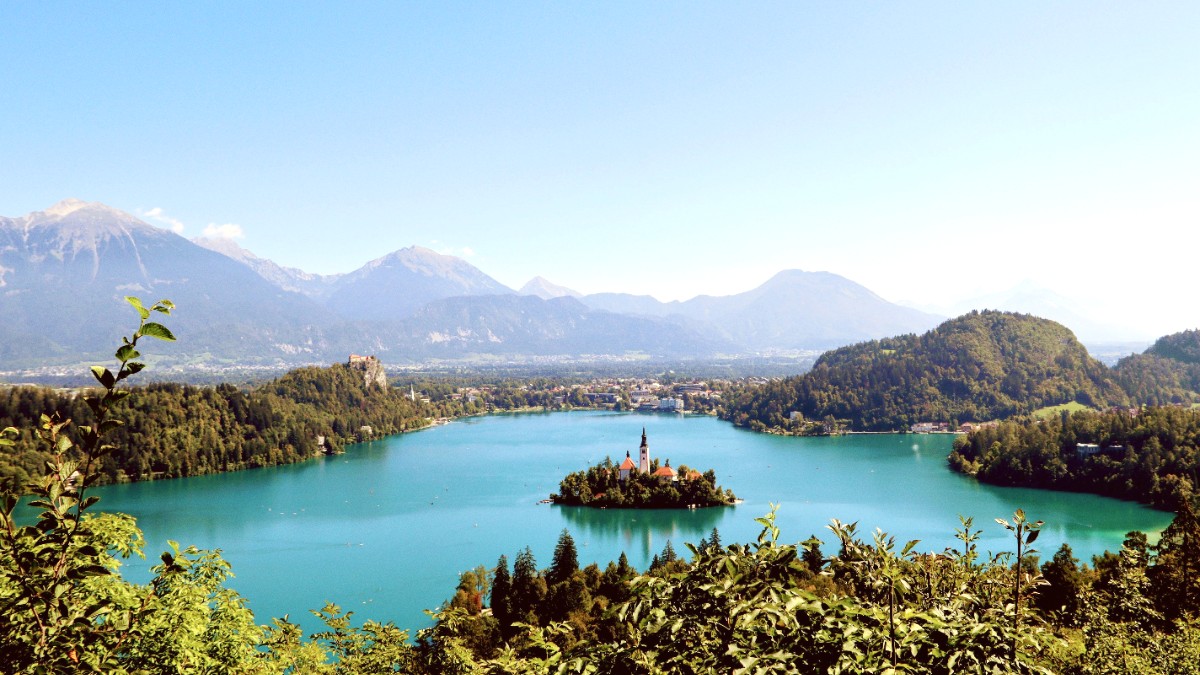
Julian Alps, Slovenia
Slovenian cuisine is a mosaic shaped by centuries of cultural exchange and geographical diversity. Influences come from Alpine (Austria, southern Germany), Pannonian (Hungary), Mediterranean (Italy), and Balkan regions. The Upper Carniola region (Bled) favors Alpine and dairy influences, with hearty, comforting dishes.
Ingredients include potatoes, cabbage, beans, buckwheat, corn, and root vegetables. Various meats (pork, beef, venison) are common, along with freshwater fish (trout). Dairy products like local cheeses and sour cream are prominent. Wild mushrooms are popular in autumn.
Slovenian cuisine is generally savory. Flavors are robust but typically milder, focusing on the natural taste of ingredients. Herbs like parsley, chives, marjoram, and lovage appear. Paprika is less common than in Hungarian dishes.
Typically light, from 7 AM - 9 AM. Often includes bread, cheese, cold cuts, or yogurt.
Lunch is the largest meal for many Slovenians, between 12 PM - 2 PM (soup, main, salad). Dinner, usually lighter, 6 PM - 9 PM. Restaurants generally open later.
The iconic dessert of Bled. Two thin puff pastry sheets, layered with vanilla custard cream and whipped cream, topped with icing sugar.
Find at almost all cafes. The original recipe comes from Park Hotel's cafe.
A traditional Slovenian rolled pastry, often for holidays. Common fillings: walnuts, poppy seeds, honey, cottage cheese, or tarragon. Sweet or savory.
Available year-round in bakeries and restaurants.
Given Bled's proximity to lakes and rivers, fresh trout is a common and delicious offering, often grilled or pan-fried with simple seasonings.
Widely available in local restaurants around the lake.
Try local white wines like Rebula or Malvazija, or reds like Teran. Popular local beer brands include Laško and Union.
Strong fruit brandies, often homemade, are popular. Common varieties: _Slivovka_ (plum brandy) and _Borovničke_ (blueberry liqueur).
Restaurants for upscale dining with sophisticated menus and ambiance.
Good value restaurants with diverse menus, balancing comfort and price.
Economical choices including local bakeries and supermarkets, plus some international flavors.
Vegetarian options are common. Many Slovenian dishes are inherently vegetarian or can be adapted. Vegan options require more careful inquiry. Supermarkets offer many suitable products.
Look for "vegetarijanska jed" (vegetarian dish). For vegans, ask if dishes are prepared without dairy/meat.
Awareness of gluten-free ("brez glutena") and other allergens is growing in tourist areas. Carry a Translation card clearly stating allergies in Slovenian.
The Bled Tourist Information Centre may have restaurant recommendations.
Making _Potica_ or _štruklji_. Inquire at Tourist Information Centre.
"Turistična Kmetija" for farm-to-table meals and insight into rural life.
Seasonal food events and smaller markets. Check local calendars.
Pack local cheeses, cured meats, bread, and fruit for an authentic meal.
Try _flancati_ (crispy, fried dough ribbons, often eaten during Carnival) or _miške_ (small, sweet fried dough balls).
These fried dough treats are popular traditional snacks.
Wild mushrooms (porcini, chanterelles) are a seasonal delicacy in autumn. Certain dishes are traditional for specific holidays, like _Potica_ for Easter and Christmas.
Seasonal produce enriches the local culinary offerings.
Bled lacks a large central market with extensive food stalls like some larger European cities.
Food tours are less common within Bled town itself.
Dining at Bled Castle is not just a meal but an experience, combining good food with panoramic views of Lake Bled and its surroundings.
Enjoying the iconic Bled Cream Cake (_Kremna rezina_) at a cafe directly on the lakefront, with views of Bled Island and the castle.
Some establishments or specific tours may offer wine tasting experiences with local Slovenian wines.
Look for "dnevna ponudba" (daily offer) or "kosilo" (lunch menu) for good value.
These specials often showcase seasonal ingredients.
Attend a local market if available. It is a good way to sample regional products and meet local producers.
Fresh, local produce often sold directly by farmers.
Slovenian cuisine blends Alpine, Pannonian, Mediterranean, and Balkan influences, yielding a wide range of tastes.
Focus on Gorenjska region dishes like _žganci_ and _štruklji_, plus national favorites like Kremna rezina and Potica.
Awareness for vegetarian, vegan, and gluten-free options is present. Communication with staff and translation cards are beneficial.
Exploring Bled's culinary scene is a delight for the senses. Here are a few final reminders for a smooth experience: